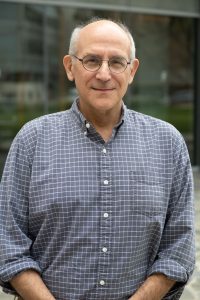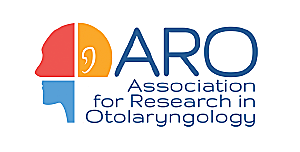
In Memoriam: Neil Segil, PhD (1953–2022)
Professor, Department of Stem Cell Biology and Regenerative Medicine, and USC Caruso Department of Otolaryngology–Head and Neck Surgery, Keck School of Medicine of USC
It is with sadness that we share that Neil Segil, PhD, passed away on July 2, 2022. Dr. Segil was an internationally recognized scientist, known for his pioneering research on factors controlling sensory cell division and specification in the inner ear. Since most people experience some degree of deafness as they age, his work is of considerable medical significance.
“Neil’s influential research was founded on a deep scholarship, insightful and innovative experiments, and an ease in extending his laboratory’s research through highly productive, collaborative partnerships,” said Andy McMahon, chair of the Department of Stem Cell Biology and Regenerative Medicine at USC.
Dr. Segil received his undergraduate degree from Hampshire College in Amherst, Massachusetts, where he majored in philosophy and psychology. He spent the next few years traveling before earning his PhD from Columbia University in New York City in biochemistry, with an emphasis on early frog development. When his thesis advisers relocated to Vienna, he moved abroad, and then completed a postdoctoral fellowship in molecular biology, with a focus on cell division and gene expression, with Dr. Nathaniel Heintz at The Rockefeller University in New York City.
In 1996, Dr. Segil was recruited to the Department of Cell and Molecular Biology in the research division of the House Ear Institute (HEI), a Los Angeles nonprofit devoted to auditory neuroscience. He spent the majority of his career at HEI, where he rose through the ranks to become Director of the Division of Cell Biology and Genetics from 2006 to 2013, and Executive Vice President for Research from 2010 to 2013.
Dr. Andrew K. Groves, now a faculty member at the Baylor College of Medicine, collaborated with Dr. Segil since 1999, when they were both scientists at HEI.
“Neil’s enthusiasm, generosity of ideas, and practical help allowed me to expand my own research scope far more than I would have planned when I started my lab,” said Groves. “He has constantly challenged me to be a better scientist, to try new techniques and to not be afraid of projects failing. As a result, I am undoubtedly a better and more successful scientist for having known him. Our collaboration lasted for over 20 years, and it has been my privilege to have Neil as a colleague, an intellectual soul mate and a friend throughout this time.”
Dr. Segil’s initial relationship with the Keck School of Medicine was established as a voluntary faculty member in the Department of Cell and Neurobiology from 1996 to 2013. When HEI’s research division closed, many of the research faculty were recruited as a group to the Keck School. Dr. Segil was a natural fit with the Department of Stem Cell Biology and Regenerative Medicine, and the USC Caruso Department of Otolaryngology–Head and Neck Surgery, and he was eventually appointed as a full Professor with tenure.
Dr. Segil was well funded throughout his career, and published extensively in high impact journals, including Developmental Cell, Nature, and Journal of Neuroscience, among others. Projects still underway include studies investigating the gene regulatory mechanisms responsible for the failure of the sensory cells of the inner ear to regenerate after being lost or damaged, and drug screening and gene therapy approaches to cellular reprogramming for the treatment of hearing loss.
Beyond his research, Dr. Segil was deeply committed to educating the next generation of scientists. In 2007, he co-founded and then directed USC’s Hearing and Communication Neuroscience graduate and post-graduate training program, funded by a T32 grant from the National Institute on Deafness and Other Communication Disorders. The training program brings together faculty and trainees in auditory neuroscience across the Keck School, the USC Viterbi School of Engineering, and the USC Dornsife College of Letters, Arts and Sciences.
According to Dr. John Oghalai, chair of the USC Caruso Department of Otolaryngology–Head and Neck Surgery, “Neil was instrumental in bringing together faculty from diverse areas across USC to design and organize the curriculum and acquire the necessary funding. The result of his tireless effort was a vibrant program for training and mentoring graduate students and postdoctoral scholars that thrives to this day.”
Dr. Christopher A. Shera, professor in the USC Caruso Department of Otolaryngology–Head and Neck Surgery, added, “The program structure reflects Neil’s philosophy and approach to teaching and mentoring—an approach deeply grounded in his own undergraduate experience at Hampshire College—that at every level, the goal of the mentor is to help others learn how to think about and solve problems while allowing those mentored to imagine it was all their own idea.”
Dr. Segil was a valued mentor for dozens of trainees at every level, many of whom have gone on to faculty positions at prestigious universities. He was also a valued mentor to junior faculty, for which he received a USC mentoring award.
Dr. Ksenia Gnedeva completed her postdoctoral training in the Segil Lab before being hired as an assistant professor in the USC Caruso Department of Otolaryngology–Head and Neck Surgery.
“I’m grateful for the opportunities to learn from Dr. Segil,” she said, “whose generosity as a colleague and a mentor can only be matched by his humbleness and kindness as a person.”
Dr. Min Yu, an associate professor of stem cell biology and regenerative medicine, was also formally mentored by Dr. Segil when she joined USC.
“Neil has set a standard as a role model, and forever inspired me to become the best scientist and mentor that I can be,” she said. “With his critical mind, innovative science, extensive knowledge, and caring and supportive attitude, I couldn’t have asked for a better career mentor.”
Dr. Segil’s leadership roles in his field extended far beyond HEI and USC. Among other important roles, he served as member of the Board of Scientific Councillors at the National Institute on Deafness and Other Communication Disorders from 2009 to 2014, and served as a member of the Advisory Council from 2017 to 2019. He was also a founding member of the Hearing Restoration Project, a national consortium of scientists supported by the Hearing Health Foundation and dedicated to studying inner ear sensory cell regeneration. These roles underscore Dr. Segil’s influence in shaping the field of molecular and cellular biology as it relates to the auditory system.
Dr. Segil is survived by his wife Greta and son Nathan. In lieu of flowers, friends and colleagues who wish to honor Dr. Segil’s life and work can considering donating to the Segil scholarship fund for supporting educational programs in stem cell and regenerative medicine by visiting our giving page. When prompted, please select “USC Stem Cell Fund” and add Dr. Segil’s name under “memorial or honorarium information.”
We would like to sincerely thank the following individuals for contributing to this piece: Andy McMahon, PhD; John Oghalai, MD; Robert E. Maxson, PhD; Andrew K. Groves, PhD; Christopher A. Shera, PhD; Min Yu, MD, PhD; Ksenia Gnedeva, PhD; Cristy Lytal; and Judy Garner, PhD.
